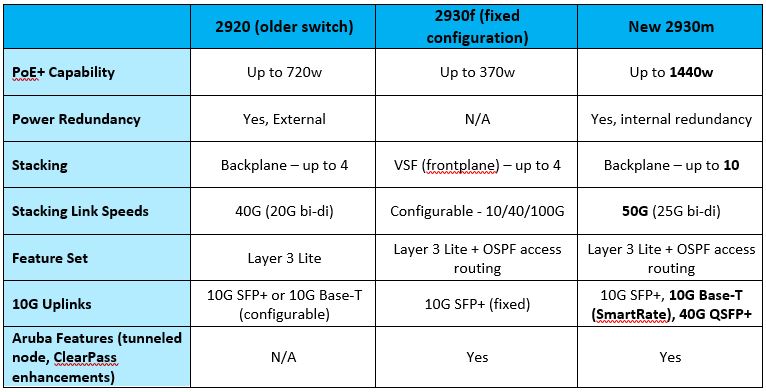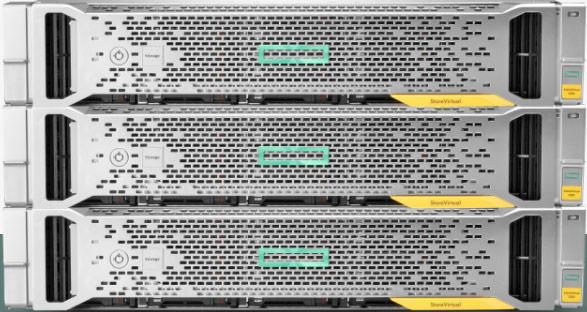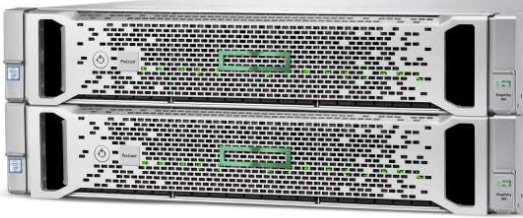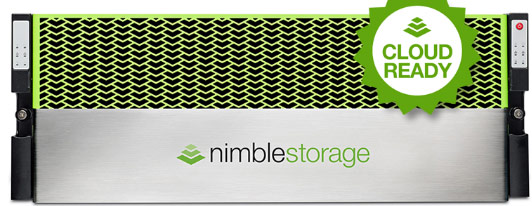Primary education has come a long way. Classrooms with desks, notebooks, textbooks, and content-centric curriculums have evolved to a more student-centered learning experience. Several technology trends are further driving the need for mobile computing within the classroom.
4 Trends Driving Adoption of Mobile Technology in the Classroom
 E-learning has grown into a multibillion-dollar market in the primary education (K-12) arena.1 Educational publishers are seeing their revenues from digital materials (electronic textbooks and other tools) eclipse revenues from printed textbooks.2 The upside for publishers, as well as research into best practices for e-learning, have led to four important trends driving adoption in the classroom:
E-learning has grown into a multibillion-dollar market in the primary education (K-12) arena.1 Educational publishers are seeing their revenues from digital materials (electronic textbooks and other tools) eclipse revenues from printed textbooks.2 The upside for publishers, as well as research into best practices for e-learning, have led to four important trends driving adoption in the classroom:
- Licensing models — Publishing companies offer cost-effective e-licensing models for schools to present students with the most current information.
- Supplementary tools — Other materials beyond traditional textbooks are now available to supplement the curriculums to help students have access to as much information as possible.
- Gamification — This enhances learning, as students enjoy the challenges and competitive aspects that stimulate learning.3
- Personalized learning — Students learn at different rates, and they more effectively acquire the collaboration and innovation skills required for college and beyond when learning environments are augmented with technology.
While all this is good news for students, one of the biggest challenges for 1:1 learning initiatives is the need for teachers to embrace the technology. If the technology or software is perceived to be too cumbersome, teachers will not willingly support it. Therefore, for any district-wide or school-wide implementation of mobile technology, teachers need to feel comfortable and find value in it.
So, What Makes a Good Mobile Solution for K-12 Education?
Built for Students
 Modern learning is often project-based, which requires reading and creation of content, collaboration, and presentation. More schools recognize that preparing students for technology-based fields — such as engineering, computer science, and vocations that require either coding or math calculation — requires the use of mobile technology that supports this sort of functionality.
Modern learning is often project-based, which requires reading and creation of content, collaboration, and presentation. More schools recognize that preparing students for technology-based fields — such as engineering, computer science, and vocations that require either coding or math calculation — requires the use of mobile technology that supports this sort of functionality.
However, students are tough on most things, including their own smartphones and textbooks. Therefore, devices need to be rugged and able to withstand drops, spills, and shocks. Devices should also be thin enough to fit easily in a backpack.
Built for Teachers
We’ve highlighted the important aspects of personal devices, such as laptops, from a student’s perspective. However, to be successful, teachers need solutions that accomplish the following:
- Enable teachers to differentiate instruction so students at different levels can learn successfully at their own rate.
- Facilitate instruction through software and collaborative tools. Solutions should help teachers orchestrate their classrooms, and save time with easier lesson planning, administrative and assessment workflows.
- Monitor student progress. Software that links the students’ devices with those of teachers can help teachers discern areas where students are individually or collectively having trouble.
1:1 Solutions Designed Specifically for Schools
HP has invested time and money in understanding the education market and gathering feedback from thousands of teachers, students, and school administrators to created impactful education technology. HP Education solutions, such as the HP ProBook x360 11 G1 Education Edition, are designed and built for dynamic learning environments to enable anytime, anywhere creativity, collaboration, and critical thinking while meeting lean budget requirements. Their goal is to create richer educational experiences, improve learning outcomes, and save teachers time.
If you are interested in implementing a 1:1 learning initiative in your school district, consider how convertible laptops from HP can cost-effectively enrich your curriculum and better prepare your students for the next part of their journey, whether it’s college or a job, as well as save your teachers time and help them engage their students more effectively.
In this post, I want to take a look at Aruba’s latest addition to their switching portfolio – the 2930m.
The 2930m is the modular brother to the 2930f (fixed) switch, which been selling for a number of months. The 2930m is the long-awaited replacement for the older 2920 switch, one of the best-selling switches ever for HPE networking, and includes some configurable options that are not available on the 2930f.
The new 2930m has configurable redundant power supplies, modular backplane stacking, higher stacking density, extremely high PoE capabilities, and a more advanced (but still not complete) layer 3 feature set for the modern edge network. The uplinks are also configurable on the 2930m, allowing for 1x 40G QSFP+ port, 4x 10G SFP+ ports, or 4x 10G SmartRate ports (1, 2.5, 5, or 10G copper ports depending on the capabilities of the device plugged into each port).
In addition to the data sheet below, I wanted to supply you with some information for quick reference. The best way to depict this information will be in table format, so we can compare the older 2920, the fixed configuration 2930f, and the new 2930m:

For more detailed information on this new switch, please download the data sheet here.
In recent months, HPE has announced two acquisitions that significantly impact their online storage portfolio. In January, it was announced that HPE would be acquiring SimpliVity, a leader in the hyperconverged space. Just two months later, in March, we heard that HPE would be acquiring Nimble, a manufacturer of all-flash and hybrid-flash storage solutions backed by a powerful predictive analytics tool called InfoSight. The acquisition of these two solutions gives HPE one of the strongest storage portfolios in the industry.
The HPE online storage portfolio now includes the following:
• MSA
• StoreVirtual (LeftHand)
• Nimble
• SimpliVity
• 3PAR
So, with so many options, the questions you may be asking are, “Where does each fit into my IT Infrastructure?” or “How do I determine which of these is right for my environment?” There is certainly some overlap amongst these options, but there are also clear reasons why you might choose one over the other.
In this post, I want to provide a summary of each of the solutions and include a few thoughts on why you might consider each as a solution for your environment. I will not cover the XP in this post because it is a solution that has a very narrow set of use cases, and most infrastructure needs will be met by the other online storage solutions in the HPE portfolio.
The solutions are organized here from entry-level to enterprise class.
MSA
 The MSA is a family of storage solutions that’s been around for some time and continues to evolve as storage technologies change. This is generally considered an entry-level array. The MSA two controller array offers Block storage over SAS, Fibre Channel, or iSCSI. Despite its entry-level categorization, the MSA is a solution that can provide up to 960TB of RAW capacity and nearly 200,000 IOPS.
The MSA is a family of storage solutions that’s been around for some time and continues to evolve as storage technologies change. This is generally considered an entry-level array. The MSA two controller array offers Block storage over SAS, Fibre Channel, or iSCSI. Despite its entry-level categorization, the MSA is a solution that can provide up to 960TB of RAW capacity and nearly 200,000 IOPS.
In addition to the capacity and performance, this array provides some impressive features, including:
– Thin Provisioning
– Automated Tiering
– Snapshots
– Array-based Replication
– Quality of Service
Consider the MSA if you are trying to meet the needs of a few hosts with a predictable workload profile. This solution is designed with smaller deployments in mind and where affordability is a key factor. If you are looking for deduplication, compression, or plan to scale your environment significantly, the MSA is not for you. We have used the MSA for small VMware environments and as Disk Targets in a backup solution.
StoreVirtual
 StoreVirtual defines an operating system for providing scale-out, software defined storage solutions. StoreVirtual is based on the LeftHand operating system. LeftHand was a company HP acquired in October of 2008 to give them an iSCSI solution in their portfolio. The LeftHand Operating System is designed to run on most x86-based hardware and can be deployed as a virtual machine, a hyperconverged appliance, or as a dedicated storage array.
StoreVirtual defines an operating system for providing scale-out, software defined storage solutions. StoreVirtual is based on the LeftHand operating system. LeftHand was a company HP acquired in October of 2008 to give them an iSCSI solution in their portfolio. The LeftHand Operating System is designed to run on most x86-based hardware and can be deployed as a virtual machine, a hyperconverged appliance, or as a dedicated storage array.
Regardless of how it is deployed, the StoreVirtual solution provides block storage over iSCSI or Fibre Channel. Capacities can vary depending on the method that is deployed but can go up to 576TB of RAW capacity on the SV3200 Appliance Storage Node.
The StoreVirtual uses an all-inclusive licensing model, and the feature set includes:
– Thin Provisioning
– Automated Tiering
– Snapshots
– Array-based Replication
– Multi-site Stretch Clusters
– Built-in Reporting
Like the MSA, StoreVirtual is intended for smaller deployments with predictable workloads. As a scale-out solution, the StoreVirtual provides an easy path for increasing capacity and performance simultaneously by adding one or more StoreVirtual Nodes. The StoreVirtual solution is a relatively affordable solution for the features it provides. And, if you are looking to take advantage of existing compute and storage hardware, StoreVirtual may be a good choice. We see the StoreVirtual solutions deployed in smaller to mid-sized virtual environments.
SimpliVity
 To be clear, SimpliVity is not a standalone, online storage solution. It is a hyperconverged solution that provides Storage, Compute, and Networking services in one converged solution. I am including it in these summaries because it includes storage as an important part of the overall solution and would be an alternative to needing to provide a separate storage solution for your VMware environment.
To be clear, SimpliVity is not a standalone, online storage solution. It is a hyperconverged solution that provides Storage, Compute, and Networking services in one converged solution. I am including it in these summaries because it includes storage as an important part of the overall solution and would be an alternative to needing to provide a separate storage solution for your VMware environment.
SimpliVity is specifically designed to provide all the infrastructure beneath the hypervisor layer. At this time, it is specifically for VMware environments. As a converged solution, SimpliVity provides everything you would need to support your environment. (Yes, that means backup as well!)
Here is a list of the features you’ll find in a SimpliVity solution:
– Servers & VMware
– Storage Switch
– HA Shared Storage
– Backup & Dedupe
– WAN Optimization
– Cloud Gateway
– SSD Array
– Storage Caching
– Data Protection Apps (Backup & Replication)
– Deduplication
– Compression
This solution is going to be more expensive than the MSA or StoreVirtual offerings; but, again, it provides all the infrastructure for your VMware environment. It’s more than just a storage solution. So, if you are looking to consolidate your infrastructure significantly and the workloads you are supporting have all been virtualized on VMware, this solution may be worth looking at for you.
Nimble
 The Nimble solutions offer Block storage in all-flash and hybrid-flash models delivered over iSCSI or Fibre Channel. The current offering from HPE will provide up to 294TB of RAW capacity on the hybrid-flash solution. Of course, compression and deduplication will provide much greater effective capacity dependent on data types.
The Nimble solutions offer Block storage in all-flash and hybrid-flash models delivered over iSCSI or Fibre Channel. The current offering from HPE will provide up to 294TB of RAW capacity on the hybrid-flash solution. Of course, compression and deduplication will provide much greater effective capacity dependent on data types.
The all-inclusive features of the Nimble family include:
– Thin Provisioning
– Automated Tiering
– Application Aware Snapshots
– Deduplication (all-flash)
– Quality of Service (all-flash)
– Array-based Replication
– Encryption
– InfoSight Predictive Analytics
This solution is designed to handle mixed-workloads and is perfect for mid-sized virtualized environments. InfoSight Predictive Analytics is a significant part of this solution, and I wouldn’t be surprised if it were integrated with other HPE storage solutions in the future.
Taken directly from the HPE QuickSpecs, the InfoSight Analytics provide:
– Proactive resolution. InfoSight automatically predicts and resolves 86% of problems before you even know there is an issue.
– Solves storage and non-storage problems. By collecting and correlating sensors across the infrastructure stack, InfoSight uncovers problems spanning from storage to VMs. In fact, 54% of the problems InfoSight resolves are outside of storage.
– Prevents known issues with infrastructure that learns. If a problem is detected in one system, InfoSight begins to predict the issue and inoculate other systems. Every system gets smarter and more reliable through collective installed base insights.
– The support you’ve always wanted. Automation and proactive resolution put the focus on prevention, streamlining the process, and connecting you directly to support expertise. No more answering routine support questions, sending log files, or attempting to recreate issues.
Nimble should be a consideration for any virtualized environment where you are looking for ease of use, great reporting, and performance.
3PAR
 Of course, this has been the workhorse for the enterprise storage offering from HPE since 2010. Depending on the model, the 3PAR Solution can start with 2 Controllers and go up to 8 Controllers for a single array. The 3PAR has both a hybrid and an all-flash solution. Capacities can scale to 6PB RAW in the new 9000 series of the 3PAR family. The 3PAR array delivers Block over iSCSI and Fibre Channel and can also supports SMB, NFS, and FTP/FTPS natively.
Of course, this has been the workhorse for the enterprise storage offering from HPE since 2010. Depending on the model, the 3PAR Solution can start with 2 Controllers and go up to 8 Controllers for a single array. The 3PAR has both a hybrid and an all-flash solution. Capacities can scale to 6PB RAW in the new 9000 series of the 3PAR family. The 3PAR array delivers Block over iSCSI and Fibre Channel and can also supports SMB, NFS, and FTP/FTPS natively.
The all-inclusive feature set includes:
– Thin Provisioning
– Thin Deduplication
– Thin Compression
– Snapshots
– Array-based Replication (add-on license)
– File Persona (SMB, NFS, FTP/FTPS)
– Automated Tiering
– Flash Cache
– Quality of Service
– Non-disruptive LUN Migration
– Array to Array Migration
– Reporting
– Multi-Tenancy
The 3PAR Array should be considered for a multi-workload environment where performance, availability, and scale are the top priorities.
Which One Is Right for You?
As mentioned at the beginning of the post, the goal here was to provide a summary of the primary online storage solutions now offered by HPE and to give a little guidance on where they might fit. Each of these solutions represent a different architecture, and those architectures should be understood clearly before making any final decisions. At Zunesis, we can help you understand which of these solutions might fit your needs and can walk you through the architectures of each.




